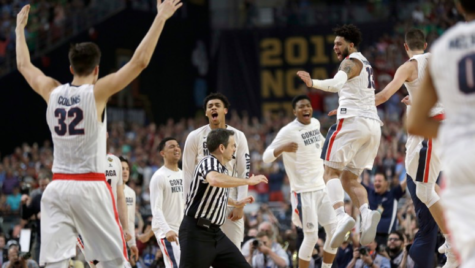From 8 to 68: How March Madness has Changed
April 20, 2018
The NCAA Division One Men’s Basketball Tournament is one of America’s most-watched sporting events, but it has taken years to become such a sensation.
The March Madness tournament generates $10 billion wagered in bets, 70 million brackets made, and hundreds of thousands of attendees. Simply qualifying for and playing in the tournament grants a team approximately $1.7 million towards their conference, split into annual payments over six years. How many games a team wins determines the money they make, and it can reach up to approximately $8.3 million.
The tournament brings in approximately $900 million to the NCAA per year, generating almost all of its annual revenue.
To say the least, the March Madness tournament is a huge money-maker and one of the largest sporting events in the United States.
But where did it all start?
The sensation of the NCAA Division One Men’s Basketball Tournament began in 1939, when it was founded by the National Association of Basketball Coaches.
What now involves 68 teams nationwide was once a small 8-team tournament consisting of four teams from both the East (Brown, Ohio State, Villanova and Wake Forest) and the West (Oklahoma, Oregon, Texas and Utah State).
The 1939 tournament took place over ten days, March 17 to 27, and eight games were played with a total attendance of around 15,000. 2017’s tournament, 78 years later, had around 705,000.
March Madness remained an 8-team tournament for 11 years, until it doubled to 16 in 1951 and grew from there.
The tournament wasn’t televised at all until 1969, 30 years after its founding. The 1969 games involved 25 teams and had an attendance of around 166,000.
What is now one of the biggest sports sensations in America was once a small, comparatively low-budget and low-income tournament. The development of March Madness completely transformed college basketball, and it all started with a couple of coaches and eight teams.







